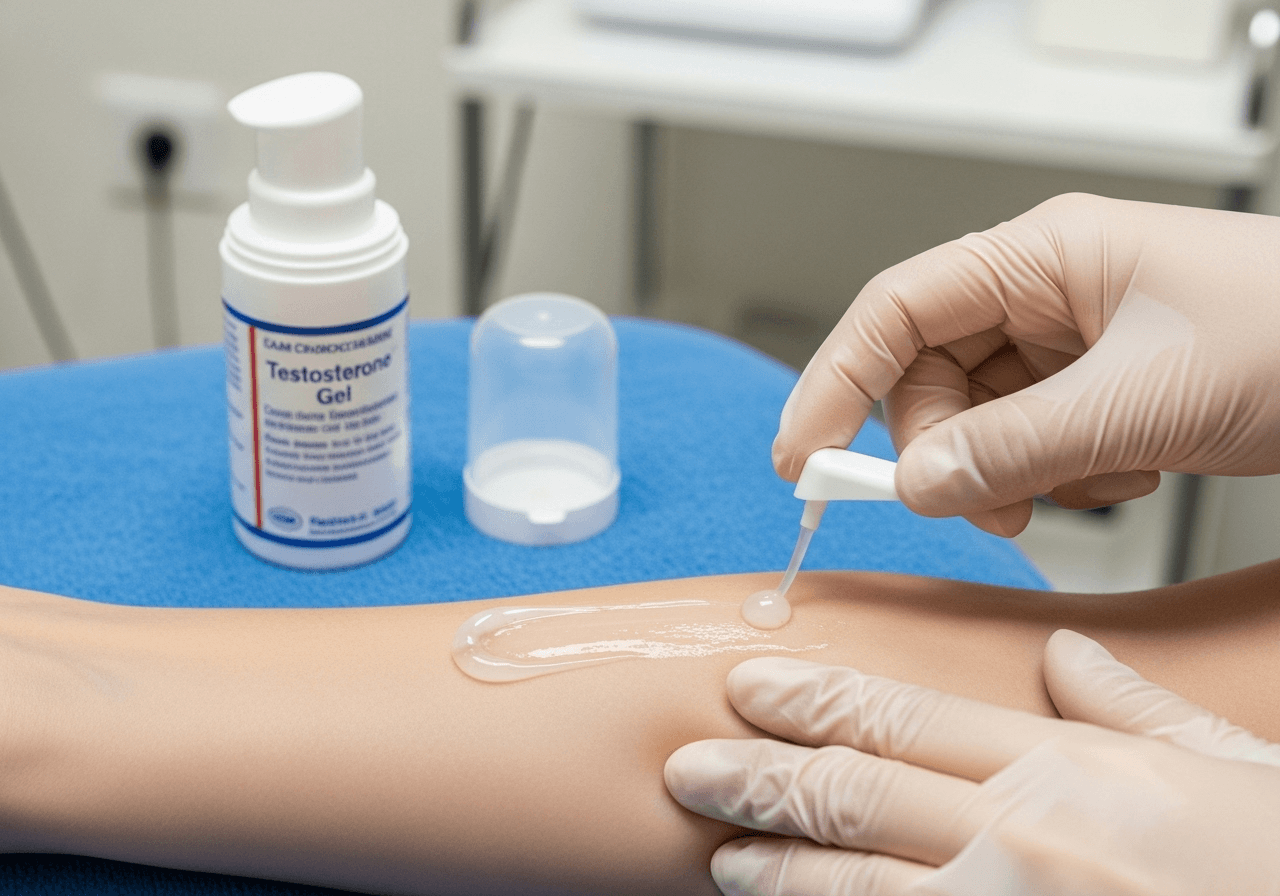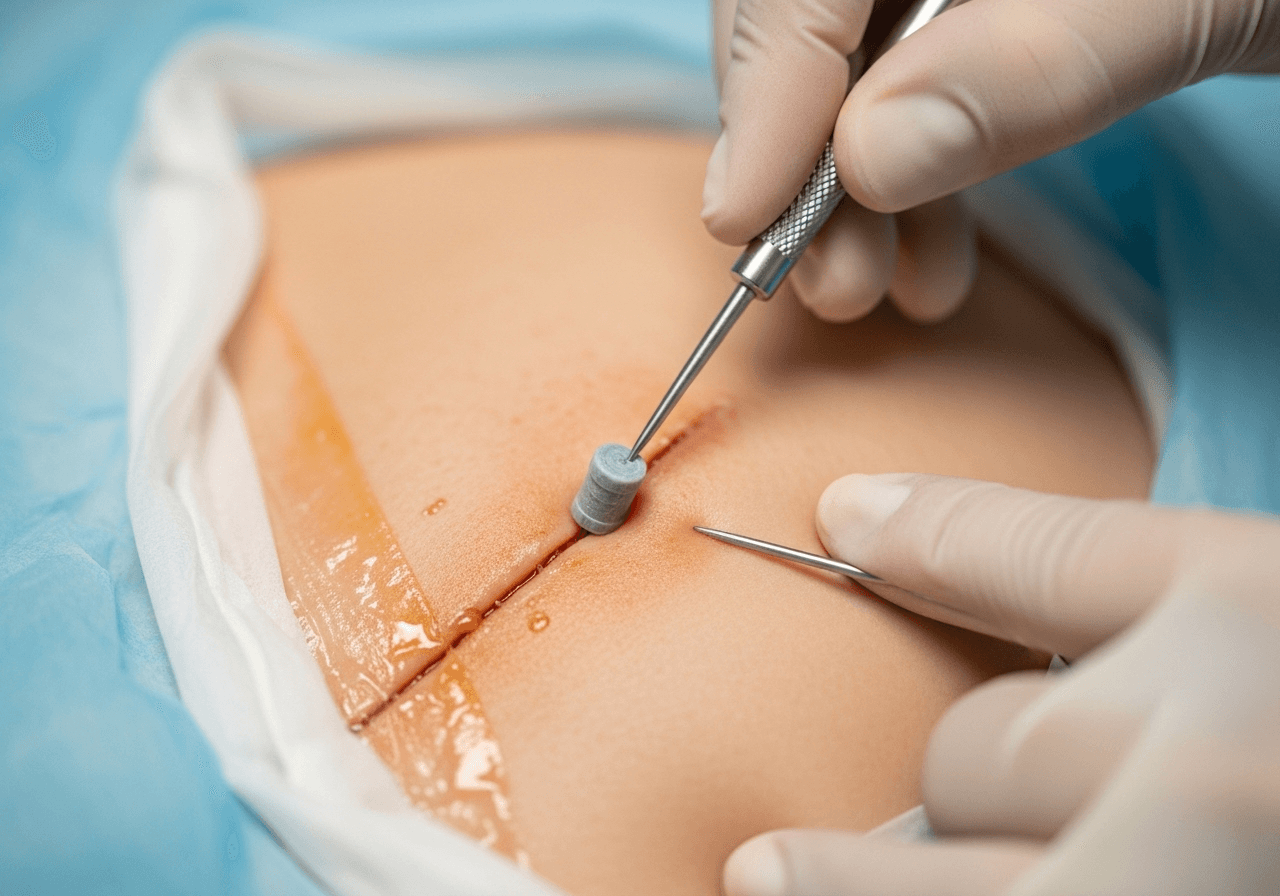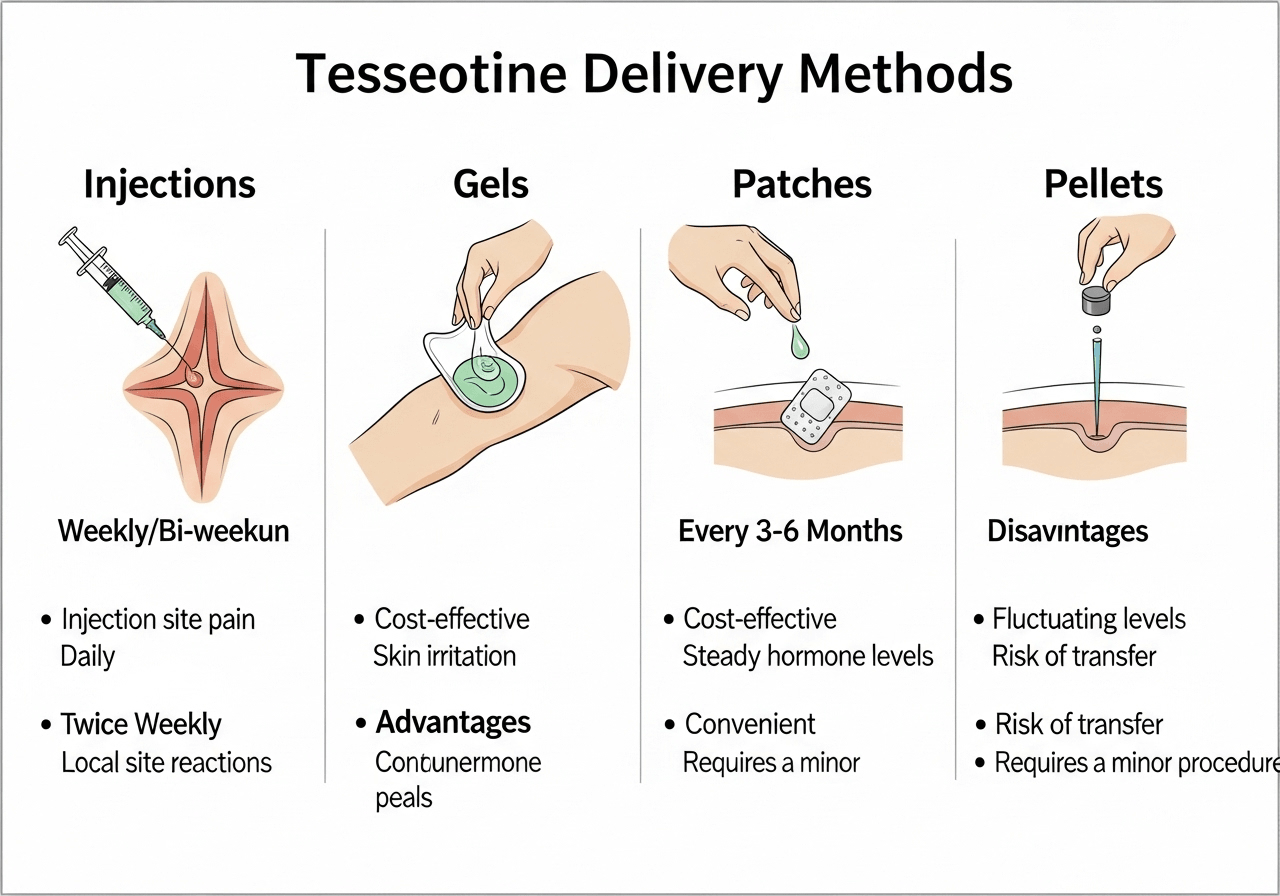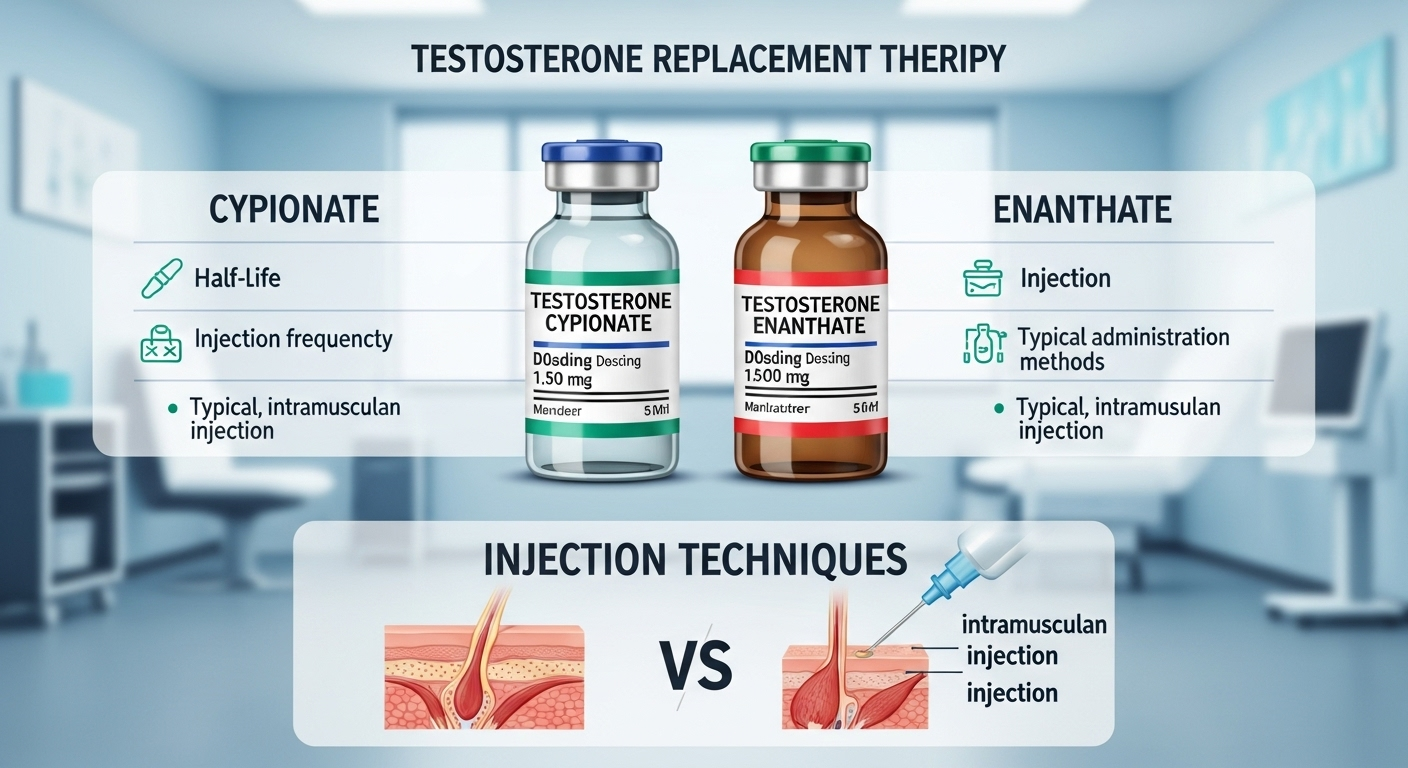Best Testosterone for TRT: Complete Guide to Testosterone Types 2025
Complete guide to choosing the best testosterone type for TRT. Compare cypionate, enanthate, gels, patches, and pellets. Expert medical insights on effectiveness, costs, and side effects for optimal hormone replacement therapy.

Choosing the right testosterone type for testosterone replacement therapy (TRT) significantly impacts treatment success, side effects, and quality of life. With multiple testosterone formulations available, understanding their differences helps patients and providers make informed decisions about TRT optimization.
Research shows that testosterone cypionate and enanthate remain the most prescribed forms, accounting for over 70% of TRT prescriptions. However, newer delivery methods like gels, patches, and pellets offer distinct advantages for specific patient populations.
This comprehensive guide examines each testosterone type, their pharmacokinetics, benefits, drawbacks, and ideal patient profiles to help you identify the best testosterone option for your TRT journey.
Medical Disclaimer: This information serves educational purposes only and does not constitute medical advice. Consult with a qualified healthcare provider before beginning any testosterone replacement therapy.
Understanding Testosterone Esters in TRT
Testosterone esters determine how quickly testosterone releases into your bloodstream and how often you need injections. The ester attached to testosterone affects its half-life, injection frequency, and overall treatment experience.
Short-Acting vs Long-Acting Esters
Short-acting esters like testosterone propionate require frequent injections (every other day) but offer rapid onset and easier dose adjustments. Long-acting esters like cypionate and enanthate provide sustained release, requiring injections only once or twice weekly.
The choice between short and long-acting esters depends on your lifestyle, injection tolerance, and desired level of control over testosterone fluctuations.
Injectable Testosterone: The Gold Standard
Injectable testosterone remains the most effective and cost-efficient form of TRT, offering superior bioavailability and consistent blood levels when properly administered.
Testosterone Cypionate
Half-life: 8-10 days
Injection frequency: Once weekly to every 10 days
Typical dose: 100-200mg per injection
Testosterone cypionate represents the most commonly prescribed TRT medication in the United States. Its longer half-life allows for convenient weekly injections while maintaining stable testosterone levels.
Advantages:
- Excellent bioavailability (nearly 100%)
- Cost-effective treatment option
- Proven long-term safety profile
- Flexible dosing schedules
- Widely available at most pharmacies
Disadvantages:
- Requires injection administration
- Potential for injection site reactions
- Possible mood fluctuations between doses
- Risk of elevated estradiol levels
Testosterone Enanthate
Half-life: 7-9 days
Injection frequency: Every 7-10 days
Typical dose: 100-200mg per injection
Testosterone enanthate offers similar benefits to cypionate with slightly shorter duration. Many patients find no practical difference between these two formulations.
Key benefits:
- Comparable efficacy to cypionate
- Slightly more frequent dosing may reduce fluctuations
- International availability
- Well-established safety profile
Testosterone Propionate
Half-life: 2-3 days
Injection frequency: Every other day
Typical dose: 50-100mg per injection
Testosterone propionate provides rapid onset and precise control but requires frequent injections. This formulation suits patients who prefer minimal testosterone fluctuations.
Ideal candidates:
- Patients starting TRT who want quick results
- Those who experience mood swings with longer esters
- Competitive athletes requiring precise hormone control
- Patients who prefer smaller, more frequent doses
Topical Testosterone Options

Topical testosterone delivers steady hormone levels without injections, making it appealing for patients with needle phobia or preference for daily application.
Testosterone Gels (AndroGel, Testim, Fortesta)
Application: Daily to shoulders, arms, or thighs
Absorption rate: 8-14% bioavailability
Typical dose: 40.5-81mg daily
Testosterone gels provide consistent daily hormone delivery, mimicking natural testosterone production patterns more closely than injections.
Advantages:
- No injection requirements
- Daily application maintains steady levels
- Easy dose adjustments
- Minimal peak-and-trough fluctuations
- Reversible if side effects occur
Disadvantages:
- Higher cost than injections
- Risk of transfer to partners/children
- Skin irritation in some patients
- Lower bioavailability than injections
- Daily compliance required
Testosterone Patches (Androderm)
Application: Nightly patch placement
Duration: 22-24 hours
Typical dose: 2-6mg daily
Testosterone patches deliver hormone replacement through controlled transdermal absorption, providing steady testosterone levels throughout the day.
Benefits:
- Consistent hormone delivery
- No risk of transfer to others
- Convenient once-daily application
- Mimics natural circadian rhythm
Limitations:
- Higher incidence of skin reactions
- Patch adhesion issues
- Visible during wear
- Expensive compared to injections
Long-Acting Testosterone Options

Long-acting testosterone formulations provide extended hormone release, reducing administration frequency but requiring specialized insertion procedures.
Testosterone Pellets (Testopel)
Duration: 3-6 months
Procedure: Subcutaneous insertion
Typical dose: 6-12 pellets (75mg each)
Testosterone pellets offer the ultimate convenience in TRT, providing consistent hormone levels for months with a single procedure.
Advantages:
- Extended duration reduces compliance issues
- Consistent testosterone levels
- No daily administration requirements
- Excellent patient satisfaction rates
- Mimics natural hormone release
Considerations:
- Higher upfront cost
- Minor surgical procedure required
- Potential for pellet extrusion
- Difficult dose adjustments
- Risk of infection at insertion site
Testosterone Undecanoate (Aveed)
Half-life: 10-14 weeks
Injection frequency: Every 10-14 weeks
Administration: Deep intramuscular injection
Testosterone undecanoate provides the longest-acting injectable option, requiring injections only every 3-4 months after initial loading doses.
Benefits:
- Minimal injection frequency
- Stable testosterone levels
- Excellent compliance
- FDA-approved safety profile
Requirements:
- Must be administered in healthcare facility
- 30-minute observation period required
- Higher cost per dose
- Limited dose adjustment flexibility
Comparing TRT Delivery Methods

Bioavailability Comparison
| Method | Bioavailability | Frequency | Cost |
|---|---|---|---|
| Injectable (Cypionate/Enanthate) | ~100% | Weekly | $ |
| Gels | 8-14% | Daily | $$ |
| Patches | 12-18% | Daily | $$ |
| Pellets | ~90% | 3-6 months | $$ |
Conclusion
The best testosterone for TRT depends on individual patient factors, including lifestyle, medical history, insurance coverage, and personal preferences. Injectable testosterone cypionate and enanthate remain the gold standard due to their effectiveness, cost advantages, and flexibility.
However, topical formulations and long-acting options provide valuable alternatives for patients who cannot tolerate or prefer alternatives to injections. Working with an experienced TRT provider ensures optimal testosterone selection and protocol customization.
Successful TRT requires ongoing monitoring, dose optimization, and willingness to adjust formulations based on treatment response and changing patient needs.
Medical Disclaimer: This information serves educational purposes only and does not replace professional medical consultation. Testosterone replacement therapy requires prescription and medical supervision. Consult with a qualified healthcare provider to determine the most appropriate testosterone formulation for your specific health situation.
Ready to Start Your Health Journey?
Our expert medical team is here to help you achieve optimal health and wellness through personalized treatment plans.
